Pleat wave: the cult of Issey Miyake
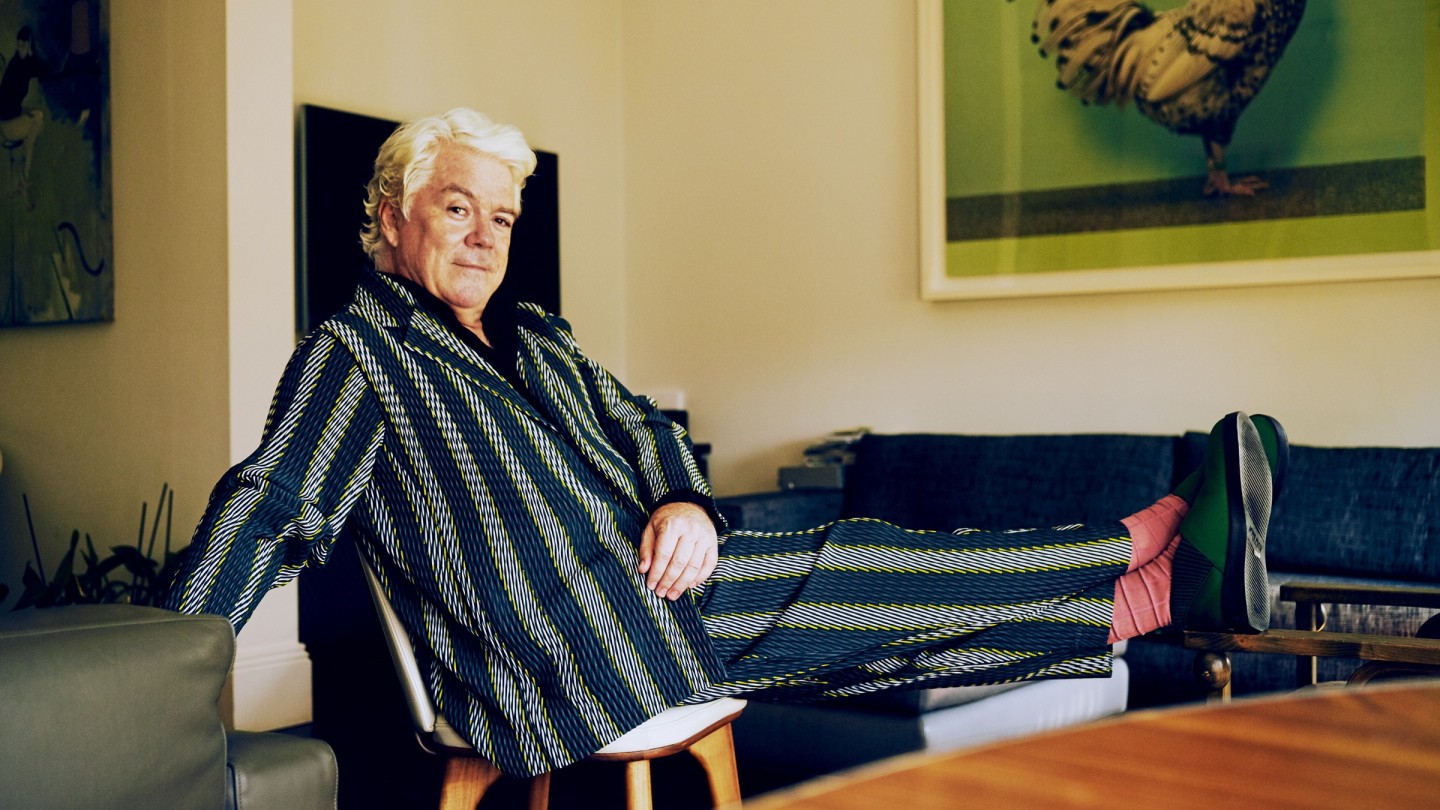
Roula Khalaf, Editor of the FT, selects her favourite stories in this weekly newsletter.
Following the news of the death of Issey Miyake in Tokyo on 5 August 2022 at the age of 84, we revisit our feature of 17 September 2020, where some of his biggest fans explain the appeal of his inimitable designs.
Performers, art historians, musicians, gardeners, fashion critics – sometimes a brand’s appeal can unite men of varying persuasions. This is true of Homme Plissé Issey Miyake, an offshoot of the Japanese fashion house that revolves around micro-pleated fabric. Since launching in 2013, the label – which hosts spectacularly lively shows during men’s Paris Fashion Week – has become one of the most inclusive lines in menswear.
Samuel Ross, the designer behind London-based label A-COLD-WALL*, uses the words “durability, necessity, function, lightness, give, buoyancy, malleable” in quick succession to explain Homme Plissé’s increasing appeal to a broad church of style-orientated men. Ross is, in fact, wearing a pair of Homme Plissé trousers during our conversation. He first discovered Miyake through his fiancée and business partner Jennifer Onojeide and working right-hand Yi Ng, who wear Pleats Please, the womenswear equivalent of the Miyake menswear brand.
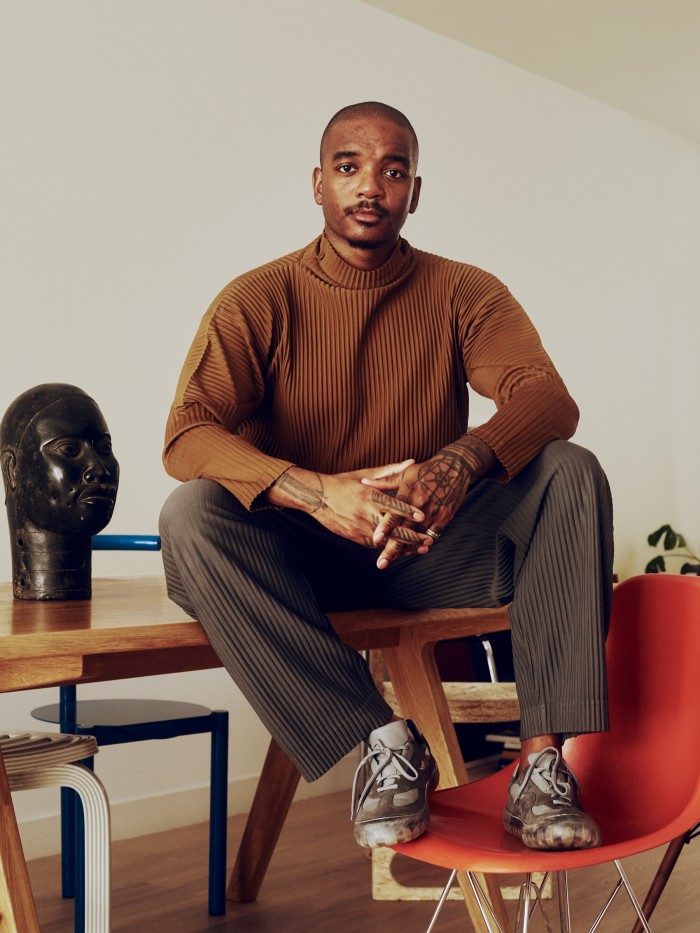
Before wearing the label himself, Ross says, “I viewed the garments as articles and pieces of art, more so than a piece of design I wanted to interact with daily.” Now, he describes wearing Homme Plissé, of which he has an extensive collection, as akin to “putting on a second skin”. He has a great appreciation for how malleable the fabric is. “Its ability to hold but also to fold and contort in such an elegant way is all down to the engineering and milling of the fabric.”
This unique material, which has been continuously researched since 1988, is pleated after sewing to create a lighter fabric that is easy to move in. The process to make these “seihin pleats” can now be seen first-hand at Homme Plissé’s first flagship store in Minami-Aoyama in Japan, which opened in July 2019. Moreover, these clothes travel well in a suitcase, don’t need ironing, can be chucked in a washing machine and are very, very comfortable.
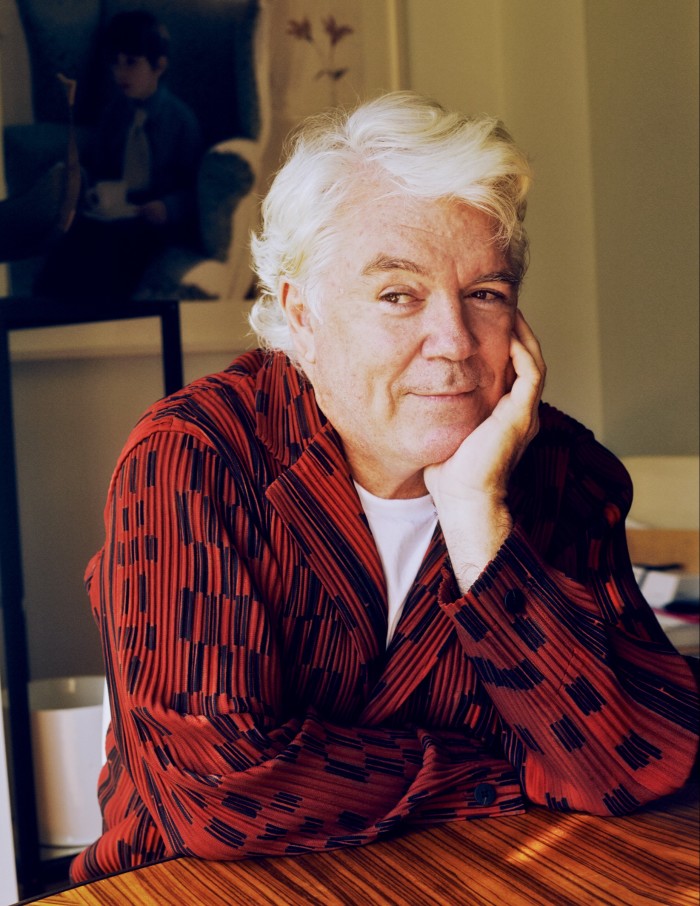
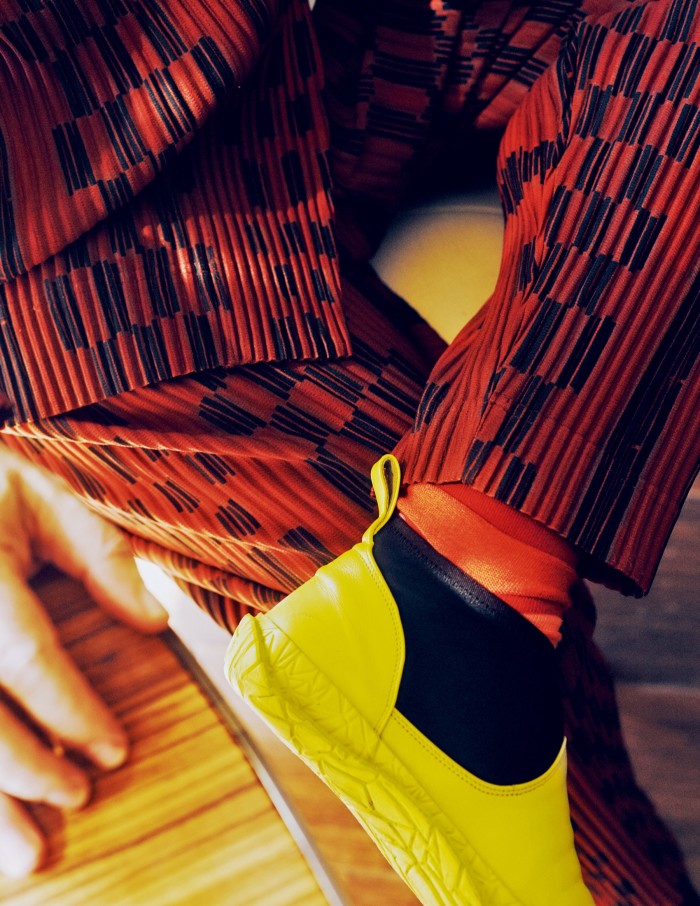
Fashion critic and Business of Fashion writer Tim Blanks is another Miyake fan. “Don’t think about it,” he fires back when asked to capture the appeal of Homme Plissé. “Just put it on. Then we’ll talk.” Blanks has been wearing Miyake since Miyake himself was designing it. “I was in a boutique in Tokyo in 2013, scooping up essentials, when Tiffany Godoy [a journalist] mentioned that there was a new line called Homme Plissé, a masculine riposte to Pleats Please, for sale. I froze. ‘Take me there,’ I pleaded.”
Blanks owns several suits and jackets in Homme Plissé, but it’s the trousers that mean the most, thanks to their elasticated waist and their quick-dry capabilities. He adds, “My favourite piece is always going to be the last one I bought: pants in a broken pyjama-ish stripe. Before that, it was a terracotta situation.”
Blanks also notes the compatibility between Homme Plissé and the other Miyake lines – while their aesthetics are different, their attitudes are not. “Intelligence, humanism, a joy in craft, a fascination with technology,” he summarises. “There is a lesson in there somewhere for the rest of fashion.” On a straightforward level, Blanks also believes that “even though you don it with the casual nonchalance of a hoodie or sweatpants, you will always get compliments – maybe even a ‘Where did you get that?’. Homme Plissé strikes a balance between creativity and comfort.”
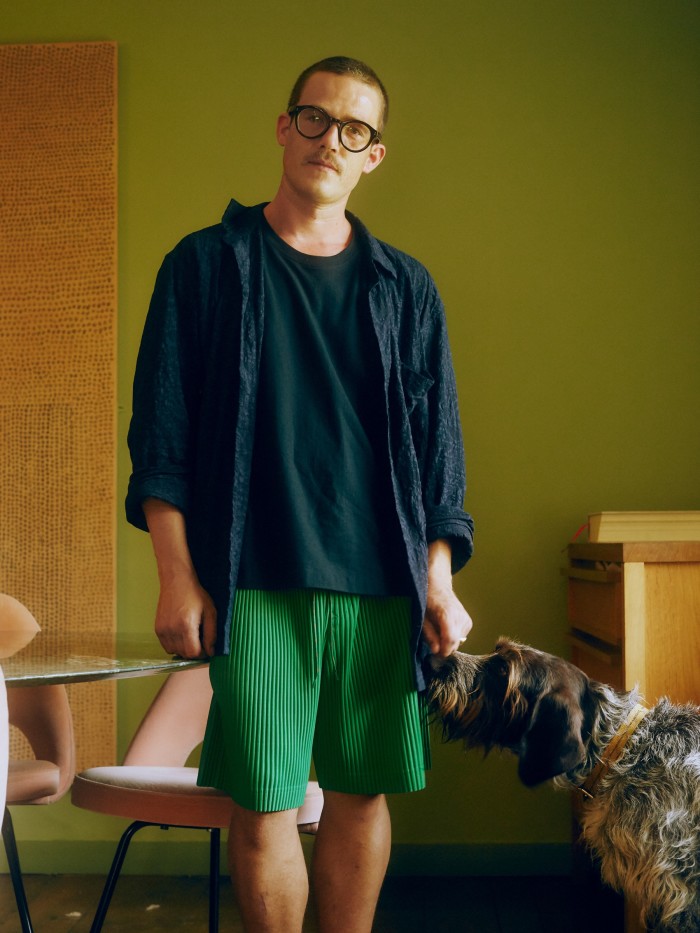

Jonathan Moutrie, a garden designer, discovered Miyake in the late 1990s through the magazines he bought as a student, such as Vogue Nippon. On a recent trip to Tokyo, Moutrie said he was “blown away by the way the Japanese men wear it in the stores, the merchandising and the unique pieces on offer”. He has now inherited some Miyake pieces from his father-in-law, and considers Homme Plissé to be “the best bit”. In his day-to-day life, he wears Homme Plissé to meet clients, as it’s not too formal but feels appropriate and smart.
Uniformity is also a draw for Stuart Williamson, fashion editor of the biannual magazine Fantastic Man. “It’s always going to look good, it’s not seasonal,” he says. “People relate to that, especially now we’re all trying to be more conscious and buy less.” His first Homme Plissé purchase was a classic short-sleeve shirt in tomato red, cut in a boxy shape. “I like the variety of different lengths – I really like that longer-length shirt even if I find it a bit scary to wear.”
Roger Cook, an 80-year-old art historian and writer, experiments with almost anything from the label. His ever-growing Homme Plissé wardrobe includes a yellow kimono-style coat and some “shocking pink” trousers alongside classic black pieces. He wears them at home, cycling, at the Frieze Art Fair and at all manner of engagements. He praises the clothes for their elegance and ease, that they are hard-wearing and washable, and likes to invest in a brand rooted in Japanese tradition and technical innovation.
“The publicity for Plissé is primarily aimed at the youth or sport end of the market, but I feel it can be successfully and stylishly worn by seniors like myself,” he says. “I was amazed that I could get away with wearing very wide skirt-like Plissé trousers, which cheekily challenge the ageist puritanism of traditional senior male British attire.” He adds, “The enormous amount of bodily gratification I obtain from my Miyake wonderfully compensates for the depredations of old age.”
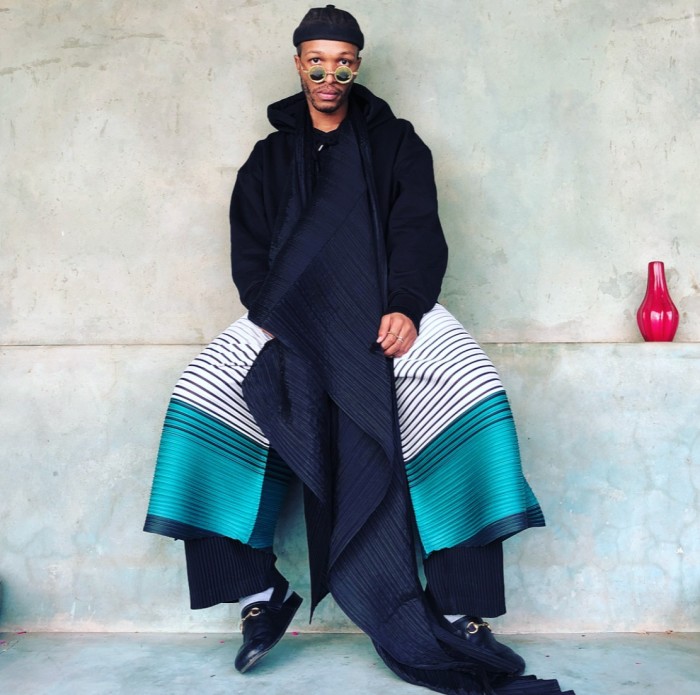
Homme Plissé also taps into the mood for genderless, unisex design. Antwaun Sargent, a writer and art critic, first clocked Pleats Please Issey Miyake on Solange Knowles during her 2017 world tour, and immediately sought out a pair of black Homme Plissé trousers. “I see more and more men wearing Issey Miyake where before it was more the province of women. If we’re thinking about the way gender is becoming less restricted, that has arguably led to men seeking out clothing that might have been considered feminine,” he says. Sargent adds that his best female friend also wears Homme Plissé; they often share their pieces.
Calvin Holmes, fashion buyer for MatchesFashion, has noted a spike in sales of the label. He discovered Miyake through his girlfriend’s Pleats Please obsession and has now built up an Homme Plissé wardrobe that includes coloured trousers, two pleated blazers, a pair of shorts and a trucker jacket. “Homme Plissé staples have a wide appeal,” he says. “They look great regardless of age, gender and body type. But the more directional pieces are finding an audience among people who want to make more of a statement. Plus, it hasn’t been accelerated by celebrity hype, which has helped maintain its design credibility.”
The core collection of Homme Plissé is available in muted tones and includes suiting, long-sleeved tops and tapered trousers. I have a black Homme Plissé top that I put on when I want to wear something that isn’t overwhelming, but looks like I’ve made a considered wardrobe choice. Sargent agrees. He says the construction and simplicity of the garments means they “don’t overpower the wearer”. He adds, “Fashion doesn’t become style until it’s personified, until people get in the clothes and bring their personalities and perspectives to them.” How perfectly Homme Plissé.
Comments